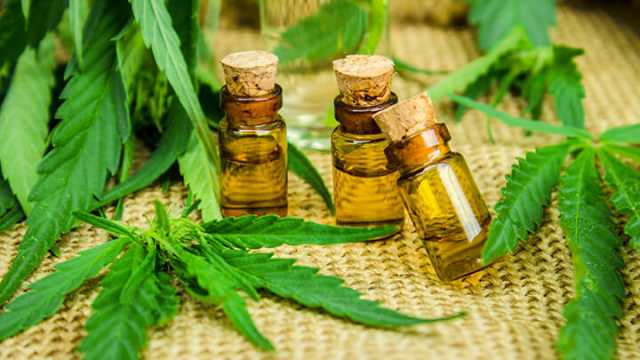Osteoporosis — Cannabis Compound Hardens Bone

Another study paper has just been published that demonstrates how plant based chemicals can help to contain the brittle bone disease, osteoporosis. Researchers at the Institute of Medical Sciences, University of Aberdeen, UK have discovered how a non-psychoactive chemical in cannabis, cannabidiol can help maintain bone strength.
The endocannabinoid process is a set of mobile receptors that are activated by means of a set of endogenous lipids in addition to compounds derived from the cannabis plant. The cannabinoid receptors have been involved with a number of physiological processes including appetite control, pain, mood and memory. Recent studies have shown that the endocannabinoid system also has a strong influence on bone metabolism, as the receptors have been well represented on osteoclasts — cells whose main function is to resorb (thin out) bone.
Bone is an active, living tissue which is being continuously formed, remodeled and formed in reaction to the physiological and physical demands of the human body. Bone matrix consists primarily of the macronutrients calcium, magnesium and phosphate and is also the material which makes up both the dense areas of the bone and the bone marrow frame. Many people still believe that if one eats foods rich in these minerals then they are going to prevent developing osteoporosis. Epidemiological and other evidence indicates that this is not necessarily the situation.

When it comes to bone health and disease the integrated processes that control the formation and resorption bone are equally as critical as the availability of calcium, magnesium and phosphate.
The formation and resorbtion of bone matrix is controlled by two main cell types:
1) Osteoblasts are bone cells which are responsible for the formation of bone matrix
2) Osteoclasts are modified white blood cells responsible for the resorption of bone tissue.
These two cell types are regulated by a complex set of signaling hormones, proteins and cell receptors that react to the ever-changing demands on bone tissue as well as other physiological processes. If there are too many osteoclasts, or when those cells become overactive, then they will resorb more matrix compared to the osteoblasts may produce. A predominance of osteoclast action results in the bone becoming less dense — the primary feature of the clinical condition known as osteoporosis.
The Aberdeen researchers have discovered that cannabidiol binds to a specific cannabinoid receptor on the bone-resorbing osteoblast cells. By so doing it inhibits these cells from resorbing the bone matrix — thereby helping to prevent further weakening of bones.
This is not the first time that plant chemicals have been shown to affect bone metabolism in favour of more powerful bones. In January 2009 researchers at Oklahoma State University in the USA discovered that, in the presence of oxidative stress and systemic inflammation, polyphenols derived from plums inhibit the action of their bone-softening osteoclasts but enhance the production and activity of bone-building osteoblasts.
For those who expect that smoking pot helps reinforce their bones, they do this in vain. Although wild cannabis contains up to 40% cannabidiol, cultivated varieties contain very little of this chemical. The important point arising from this study, in my view, is the fact that it reveals how vital plant chemicals are in the prevention of chronic degenerative diseases such as osteoporosis. There are certain to be several different phytonutrients in other food crops with a positive influence on bone metabolism — they simply have not been “discovered” yet.
While we wait patiently for that study to be completed, it’s very important to eat (not smoke) that a broad range of vegetables, fruit and spices to ensure an adequate intake of a plethora of beneficial phytonutrients.
